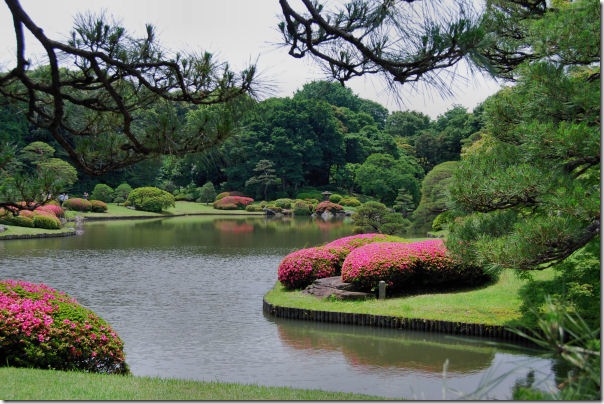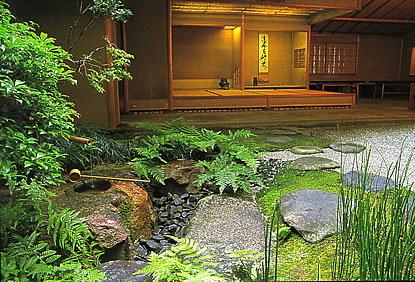Japanese Gardens appeared around 700 CE (Tang Dynasty) with designs built around collections of plants, rocks and water suggesting larger and more complex landscapes. A typical Japanese garden may seem quite small if compared for example to The Australian Botanic Garden Mount Annan ( formerly “Mount Annan Botanic Garden”) (110ha) or Sydney’s’ Taronga Park Zoo (28 ha) to name just two.
Campbelltown City is fortunate to have a highly regarded Japanese Garden located on the grounds of The Campbelltown City Art Centre. The Tea House located in this garden was a Bicentenary gift from Campbelltown’s Sister City, Koshigaya in Japan in 1988.
Japanese Garden Types:

1) “Dry Landscape Garden” (“Karesansui”)
– Water is not used in this design. Instead it uses raked gravel and sand to give the appearance of water. Sometimes three or more small moss covered rocks with small shrubs growing on them are part of the design.
These gardens are often found at meditation temples.

2) “Hill and Pond Garden” (“Tsukiyama”)
– This garden copies famous gardens from China and Japan. ‘The Hill and Pond’ garden try to make a small garden look much bigger. Plants are used to hideviews of landscapes or buildings outside the garden. Ponds, hills, trees, streams, bridges and paths are commonly used in this garden.

3) “Tea House and Tea Ceremony Garden” (“Chaniwa”)
– Chaniwa gardens are built especially for holding Tea Ceremonies!
For this, a Tea House is needed! The Tea House and garden design are based on the “rules” of the Tea Ceremony – stepping stones leading to the house and stone lanterns and stone water basins (Tsukubai) are part of the design elements.
Today, these gardens are popular world –wide and are found in both big cities and small towns and villages.
Visitors come to sit, pray, relax with Nature and forget the world outside for a short while. Let’s try it ….
